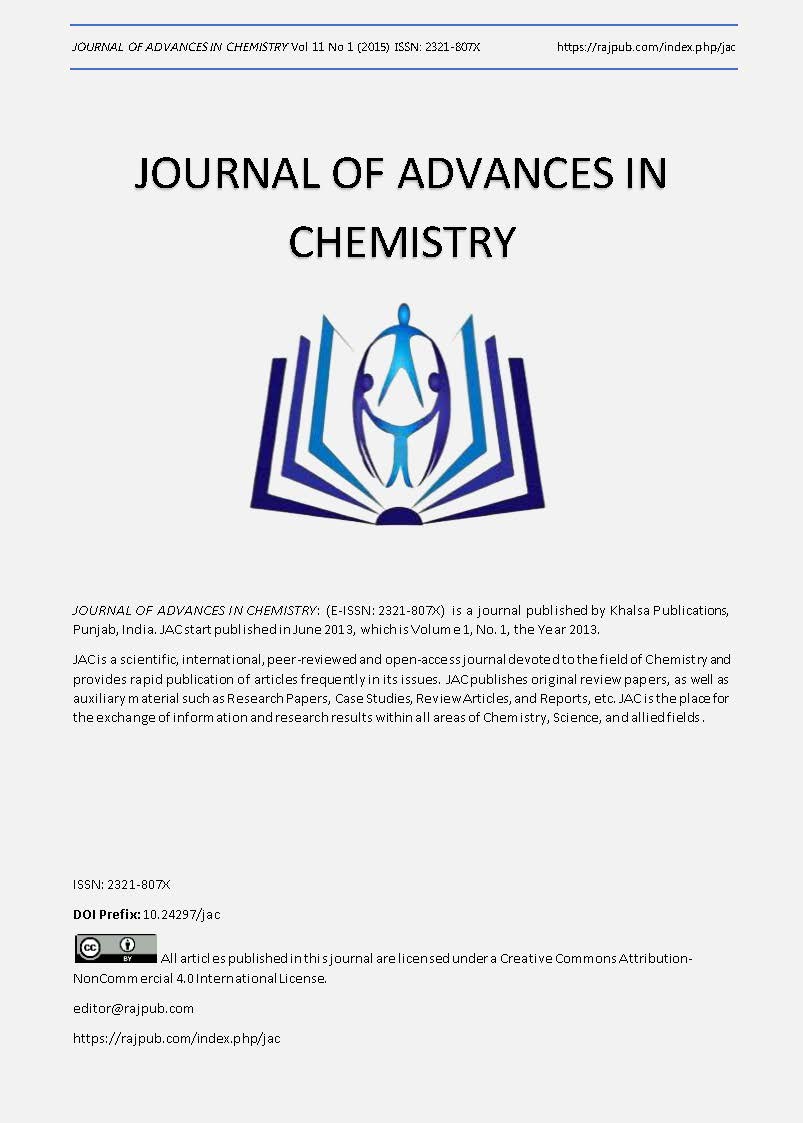Using 5-(4-aminoantipyrineazo)-8-hyrroxyquinoline as Complexometry Reagent with Cupper (II) and Zinc (II) Ions and its Biological Activity
DOI:
https://doi.org/10.24297/jac.v11i1.2226Keywords:
Azo dye complexes, Solvent effects, Stability constant, Biological activityAbstract
  The complexes of azo dye 5-(4-aminoantipyrineazo)-8-hyroxyquinoline (L) with cupper (II) and zinc (II) Ions were synthesized. Characterization of these azo dyes complexes have been done on the basis of elemental analysis and IR techniques. The work involves a study of optimum conditions (time, pH, sequence of addition and temperature effects) for forming the complexes. The spectra of the complexes have been studied for a range of concentrations which Lambert – Beer's law were obeyed with sensitivity of the spectrophotometric method in terms of molar absorptivity 1.6×104 and 1.2×104 l .mol-1.cm-1 for zinc and cupper azo dyes complexes respectively .The stoichiometry of the complexes has been found to be 1:2 (metal : ligand). The overall stability constants were determined by the corresponding solutions method. The interferences effects of the foreign ions were studied. The biological activity of two complexes with two type of Bacteria (Clostridium botulinum and Escherichia Coli) were also studied.
Downloads
Downloads
Published
How to Cite
Issue
Section
License
 All articles published in Journal of Advances in Linguistics are licensed under a Creative Commons Attribution 4.0 International License.
All articles published in Journal of Advances in Linguistics are licensed under a Creative Commons Attribution 4.0 International License.




